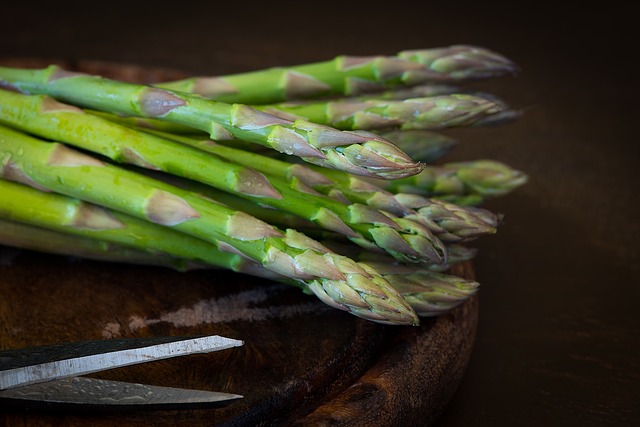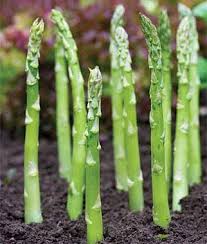
Legend has it that the Egyptians offered it up to their gods. The Romans used their fastest runners and chariots to transport it to the Alps for freezing, to store for special festivals. The Romans even had a saying, to do something “faster than you can cook asparagus”, suggesting they knew exactly how to cook this delicacy.
Although it has been harvested for thousands of years, and worshipped by ancient cultures, little is known about the asparagus plant, other than the fact that it makes certain bodily fluids a little, well, smelly. Nevertheless, we think it’s a vegetable worth getting to know. Here’s an introduction to the (not so) humble asparagus…
The asparagus is a perennial plant. This means it lives for more than two years, and takes a nap every year in the cooler months. In fact, it loves the cold, the frostier the better.

To grow asparagus, you plant the roots, called crowns (pretentious, much?) when the weather starts to warm. Once planted, don’t rush it, it needs 2-3 years before it’s ready to harvest. By then, it’s decided whether or not it likes you, and will continue to produce for the next 20-30 years.
The thickness of the stem tells us how old the plant is. In the first few years, asparagus stems are small, about the diameter of a pencil lead, and overtime, they grow to be thicker, about 1-2 centimetres in diameter.
Asparagus is quite a selfish plant, it doesn’t like sharing it’s space with any other plants or weeds, and so it’s important to plant it on it’s own, and to keep the area weed-free, so as not to upset your darling asparagus.
These days, asparagus is grown all over the world, and, interestingly, China is the biggest producer of asparagus. Asparagus is harvested in spring and early summer. In the Northern hemisphere, annual festivals, such as Asparafest (not a joke), celebrate the asparagus season and the start of spring, and you can enter the asparagus eating competition, in the hope of being named King or Queen of Asparagus. It’s aspara-tastic (again, not a joke).
Asparagus is harvested as young shoots or spears, cut soon after poking their heads above ground. Towards the end of the harvesting season, the spears are left to grow naturally, and they grow into small leafy ferns, about 1.5m high. This is important, as the older plants feed the root (or crown) for next year’s harvest. In Autumn, they grow bright red berries, that are, in fact, poisonous to humans. The fern then dies down during the cooler months, and starts all over again when it warms up.
So there you have it, the asparagus plant in a nutshell, from its colourful history as a royal vegetable to a modern-day chinese export. Hopefully knowing a little more about this veggie inspires you to cook it, well, “faster than you can cook asparagus”!
